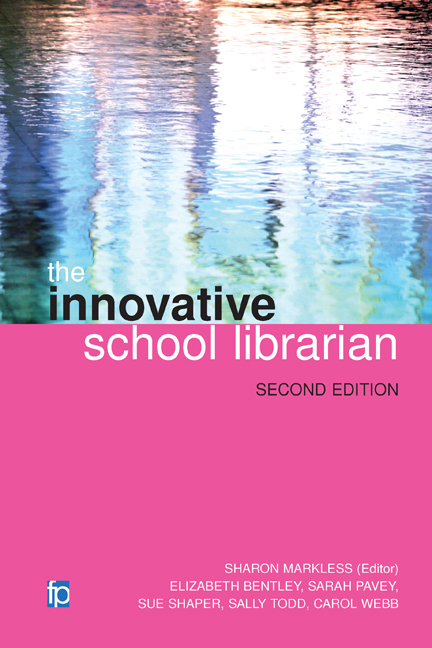Book contents
- Frontmatter
- Contents
- Preface
- Acknowledgements
- PART 1 WHO IS THE LIBRARIAN?
- PART 2 YOUR COMMUNITY: FROM PERCEPTIONS TO PRACTICE
- 4 Identifying and understanding your community
- 5 Making a positive response to challenges
- 6 Generating and using evidence of impact
- PART 3 MOVING FORWARD
- Appendix 1 Levels of education
- Appendix 2 School library self-evaluation questions
- Appendix 3 An example of a completed self-evaluation summary sheet
- Appendix 4 SWOT analysis
- Appendix 5 Choosing priorities in development planning: sample grid
- Appendix 6 Example of a force field analysis: a tool for managing change
- Appendix 7 Managing change: process and principles
- References
- Index
6 - Generating and using evidence of impact
from PART 2 - YOUR COMMUNITY: FROM PERCEPTIONS TO PRACTICE
Published online by Cambridge University Press: 08 June 2018
- Frontmatter
- Contents
- Preface
- Acknowledgements
- PART 1 WHO IS THE LIBRARIAN?
- PART 2 YOUR COMMUNITY: FROM PERCEPTIONS TO PRACTICE
- 4 Identifying and understanding your community
- 5 Making a positive response to challenges
- 6 Generating and using evidence of impact
- PART 3 MOVING FORWARD
- Appendix 1 Levels of education
- Appendix 2 School library self-evaluation questions
- Appendix 3 An example of a completed self-evaluation summary sheet
- Appendix 4 SWOT analysis
- Appendix 5 Choosing priorities in development planning: sample grid
- Appendix 6 Example of a force field analysis: a tool for managing change
- Appendix 7 Managing change: process and principles
- References
- Index
Summary
Evaluating what we do is a crucial part of our professional practice. We work as librarians in order to make a difference for others but how do we know if we are succeeding if we do not evaluate? How can we persuade others of the value of our work without having evidence to support our claims? For example, head teachers want to see a return on the investment made in the library and evaluation evidence helps to make its impact visible. Practice that is evidence-based has credibility in the eyes of others and enables us to demonstrate the library's strategic role and improve services. In addition, active use of evidence reflects the wider move across education towards evidence-based practice. We need to be seen working at that level.
It is important not only to generate our own evidence, but also to keep up to date and actively use published research to raise awareness of the possibilities that school librarians can offer and the conditions most likely to make any initiative effective. This chapter will look at using both published evidence and standards, and evidence we generate ourselves.
Using published evidence
Some useful examples of published evidence
There is now a good body of published evidence from which the school librarian can draw to inform a course of action they are considering, or to support a case they are trying to make.
One useful source is a critical review of the published evidence on the impact of school libraries (Williams, Wavell and Morrison, 2013), which brought together a range of studies from different countries. It is important that school librarians know about, and use, this type of material because of its credibility. Williams and her colleagues cited a well known series of large-scale statistical studies conducted in a number of American states and a Canadian province, from Colorado (Lance, Rodney and Hamilton-Pennell, 2000) to New York (Small et al., 2007), which found a direct correlation between a well staffed and resourced school library and higher test scores for all student grades (Scholastic Research Foundation, 2008).
Information
- Type
- Chapter
- Information
- The Innovative School Librarian , pp. 87 - 104Publisher: FacetPrint publication year: 2016
